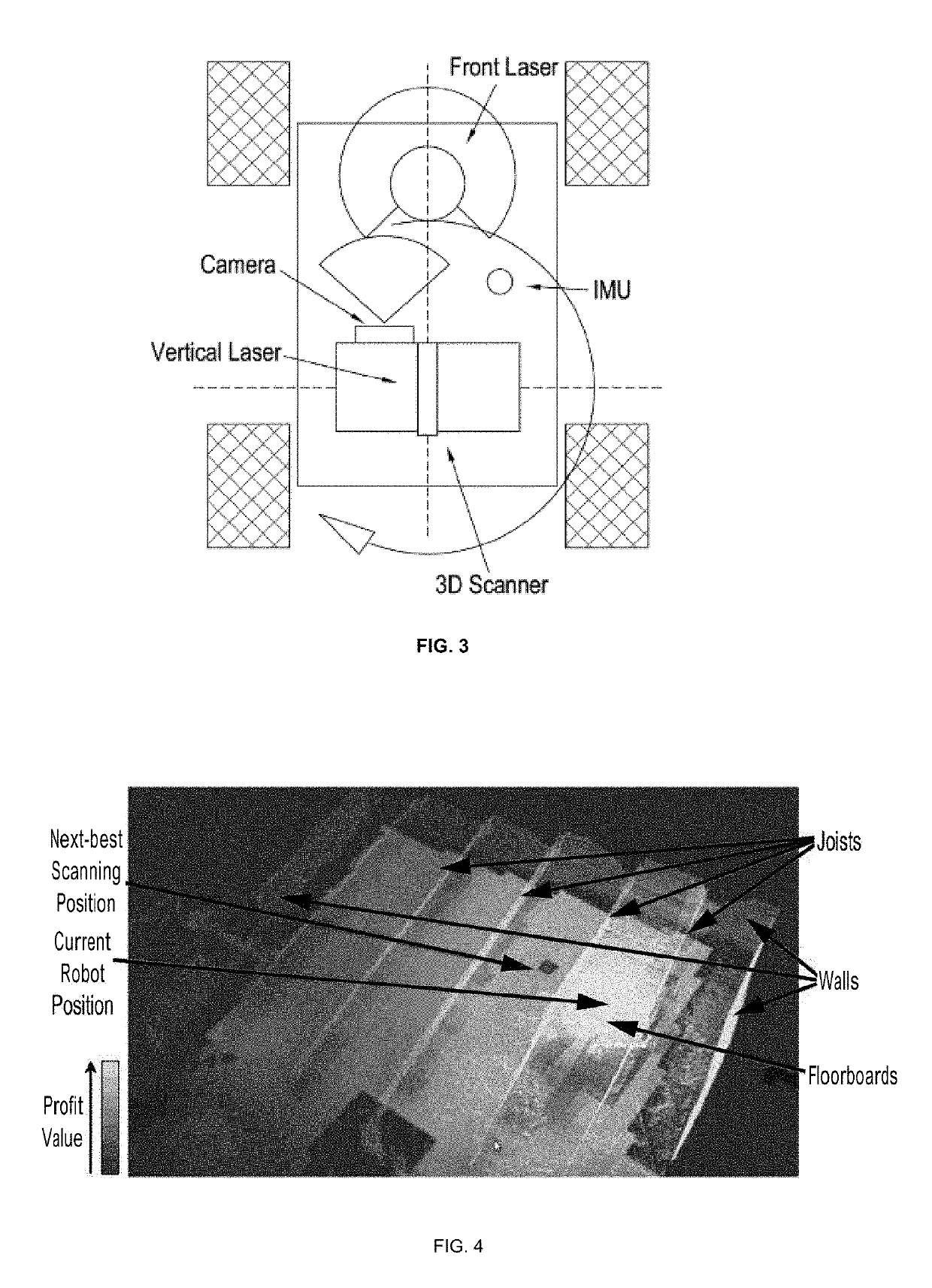Autonomous surveying of underfloor voids
- Summary
- Abstract
- Description
- Claims
- Application Information
AI Technical Summary
Benefits of technology
Problems solved by technology
Method used
Image
Examples
Embodiment Construction
[0042]In this application, a novel robotic system that solves the problem of autonomous mapping an underfloor void is presented. The approach is based on a 3D laser scanner. A real time navigation system and a new high level planner that selects the next best scanning position control the motion of the robot. Multiple scans are aligned using ICP (iterative closest point) and graph optimization techniques. Finally, a point cloud fusion algorithm creates a global model of the environment from the aligned scans.
[0043]The first contribution of this application consists of the development and integration of a robotic system that solves this problem by combining a 3D scanner system, ICP-based alignment and 3D model reconstruction with a real time navigation system that includes an autonomous survey planning system that intelligently selects the next best scanning position. In this regard, the second contribution is the extension of the traditional 2D exploration next-best-view algorithm [...
PUM
 Login to View More
Login to View More Abstract
Description
Claims
Application Information
 Login to View More
Login to View More - R&D
- Intellectual Property
- Life Sciences
- Materials
- Tech Scout
- Unparalleled Data Quality
- Higher Quality Content
- 60% Fewer Hallucinations
Browse by: Latest US Patents, China's latest patents, Technical Efficacy Thesaurus, Application Domain, Technology Topic, Popular Technical Reports.
© 2025 PatSnap. All rights reserved.Legal|Privacy policy|Modern Slavery Act Transparency Statement|Sitemap|About US| Contact US: help@patsnap.com



